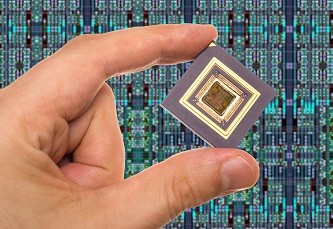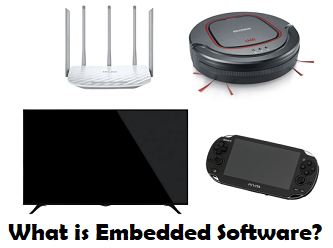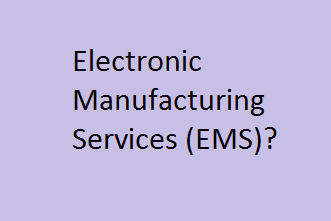This website uses cookies so that we can provide you with the best user experience possible. Cookie information is stored in your browser and performs functions such as recognising you when you return to our website and helping our team to understand which sections of the website you find most interesting and useful.
Electronic Sub Assembly Manufacturing
Electronic Sub Assembly Manufacturing: A Comprehensive Guide
In the rapidly evolving world of electronics, the demand for efficient and reliable manufacturing processes is paramount. One of the key components of this industry is electronic sub assembly manufacturing. This article delves into the intricacies of electronic sub assembly manufacturing, exploring its significance, processes, benefits, and future trends.
What is Electronic Sub Assembly Manufacturing?
Electronic sub assembly manufacturing refers to the process of creating smaller, functional components that will eventually be integrated into larger electronic systems. These sub assemblies can include printed circuit boards (PCBs), connectors, and other electronic components that are essential for the final product's functionality.
Importance of Electronic Sub Assemblies
Electronic sub assemblies play a crucial role in various industries, including consumer electronics, automotive, telecommunications, and medical devices. They serve as the building blocks for complex electronic systems, ensuring that each component works seamlessly together. The quality and reliability of these sub assemblies directly impact the performance and longevity of the final product.
The Electronic Sub Assembly Manufacturing Process
The manufacturing process of electronic sub assemblies involves several key steps, each critical to ensuring the final product meets quality standards and customer expectations.
1. Design and Prototyping
The first step in electronic sub assembly manufacturing is the design phase. Engineers and designers create detailed schematics and layouts for the sub assemblies, often using computer-aided design (CAD) software. Prototyping is also an essential part of this phase, allowing manufacturers to test and refine their designs before full-scale production.
2. Material Selection
Choosing the right materials is vital for the performance and durability of electronic sub assemblies. Common materials include:
- Printed Circuit Boards (PCBs): Typically made from fiberglass or epoxy resin.
- Components: Resistors, capacitors, and integrated circuits made from various metals and semiconductors.
- Connectors: Often made from plastic and metal alloys.
3. Component Sourcing
Once the design is finalized and materials selected, manufacturers must source the necessary components. This step involves working with suppliers to obtain high-quality parts at competitive prices. Establishing strong relationships with reliable suppliers is crucial for maintaining production schedules and quality standards.
4. Assembly
The assembly process can vary depending on the complexity of the sub assembly. Common methods include:
- Surface Mount Technology (SMT): Components are mounted directly onto the surface of PCBs.
- Through-Hole Technology: Components are inserted into holes drilled in the PCB and soldered in place.
- Hybrid Assembly: A combination of SMT and through-hole methods.
5. Soldering
Soldering is a critical step in the assembly process, as it ensures electrical connections between components and the PCB. Various soldering techniques are employed, including:
- Wave Soldering: A continuous wave of molten solder is used to solder through-hole components.
- Reflow Soldering: SMT components are soldered using a reflow oven that melts solder paste.
- Hand Soldering: Manual soldering for small batches or repairs.
6. Testing and Quality Assurance
After assembly, rigorous testing is conducted to ensure the sub assemblies meet quality standards. This may include:
- Functional Testing: Verifying that the sub assembly operates as intended.
- In-Circuit Testing (ICT): Checking for defects in the PCB and components.
- Environmental Testing: Assessing performance under various environmental conditions.
7. Packaging and Shipping
Once testing is complete, the sub assemblies are packaged for shipment. Proper packaging is essential to protect the components from damage during transit. Manufacturers often use anti-static materials and custom packaging solutions to ensure safe delivery.
Benefits of Electronic Sub Assembly Manufacturing
Investing in electronic sub assembly manufacturing offers numerous advantages for businesses, including:
1. Cost Efficiency
By outsourcing electronic sub assembly manufacturing, companies can reduce labor costs and overhead expenses. This allows them to focus on core competencies while benefiting from the expertise of specialized manufacturers.
2. Improved Quality
Specialized manufacturers often have advanced quality control processes in place, resulting in higher-quality sub assemblies. This can lead to fewer defects and improved overall product reliability.
3. Faster Time to Market
Outsourcing sub assembly manufacturing can significantly speed up the production process. Manufacturers with established supply chains and efficient processes can deliver components more quickly, allowing companies to bring their products to market faster.
4. Access to Advanced Technology
Many electronic sub assembly manufacturers invest in the latest technology and equipment, providing clients with access to advanced manufacturing capabilities that may not be feasible in-house.
5. Scalability
As demand for products fluctuates, electronic sub assembly manufacturing allows companies to scale production up or down without the need for significant capital investment in equipment or facilities.
Challenges in Electronic Sub Assembly Manufacturing
While there are many benefits to electronic sub assembly manufacturing, several challenges must be addressed:
1. Supply Chain Disruptions
Global supply chain issues can impact the availability of components, leading to delays in production. Manufacturers must develop strategies to mitigate these risks, such as diversifying suppliers and maintaining inventory buffers.
2. Quality Control
Ensuring consistent quality across all sub assemblies can be challenging, especially when working with multiple suppliers. Implementing robust quality assurance processes is essential to maintain high standards.
3. Rapid Technological Changes
The electronics industry is characterized by rapid technological advancements. Manufacturers must stay updated on the latest trends and technologies to remain competitive.
4. Regulatory Compliance
Many electronic products are subject to strict regulatory requirements. Manufacturers must ensure that their sub assemblies comply with relevant standards, which can vary by region and industry.
Future Trends in Electronic Sub Assembly Manufacturing
The landscape of electronic sub assembly manufacturing is continually evolving. Here are some key trends to watch:
1. Automation and Robotics
Automation is becoming increasingly prevalent in electronic sub assembly manufacturing. Robotics and automated systems can enhance efficiency, reduce labor costs, and improve precision in assembly processes.
2. Industry 4.0
The integration of IoT (Internet of Things) technologies into manufacturing processes is a significant trend. Industry 4.0 enables real-time monitoring and data analysis, leading to improved decision-making and operational efficiency.
3. Sustainable Manufacturing
As environmental concerns grow, manufacturers are focusing on sustainable practices. This includes reducing waste, using eco-friendly materials, and implementing energy-efficient processes.
4. Miniaturization
The trend towards smaller, more compact electronic devices is driving the need for advanced sub assembly manufacturing techniques. Manufacturers must adapt to produce smaller components without compromising quality or performance.
5. Customization
As consumer demand for personalized products increases, manufacturers are exploring ways to offer customized electronic sub assemblies. This may involve flexible manufacturing processes that can accommodate unique designs and specifications.
Conclusion
Electronic sub assembly manufacturing is a vital component of the electronics industry, providing the building blocks for a wide range of products. By understanding the processes, benefits, challenges, and future trends in this field, businesses can make informed decisions about their manufacturing strategies. As technology continues to advance, the importance of efficient and high-quality electronic sub assembly manufacturing will only grow, shaping the future of the electronics landscape.
FAQs
1. What is the difference between electronic assembly and electronic sub assembly?
Electronic assembly refers to the complete process of assembling an electronic product, while electronic sub assembly focuses on creating smaller, functional components that will be integrated into the final product.
2. How can I choose the right electronic sub assembly manufacturer?
Consider factors such as the manufacturer's experience, quality control processes, technology capabilities, and customer reviews when selecting a partner for electronic sub assembly manufacturing.
3. What industries benefit from electronic sub assembly manufacturing?
Industries such as consumer electronics, automotive, telecommunications, and medical devices all benefit from electronic sub assembly manufacturing.
4. What are the common testing methods used in electronic sub assembly manufacturing?
Common testing methods include functional testing, in-circuit testing (ICT), and environmental testing to ensure quality and reliability.
5. How does automation impact electronic sub assembly manufacturing?
Automation enhances efficiency, reduces labor costs, and improves precision in the assembly process, making it a key trend in electronic sub assembly manufacturing.
















